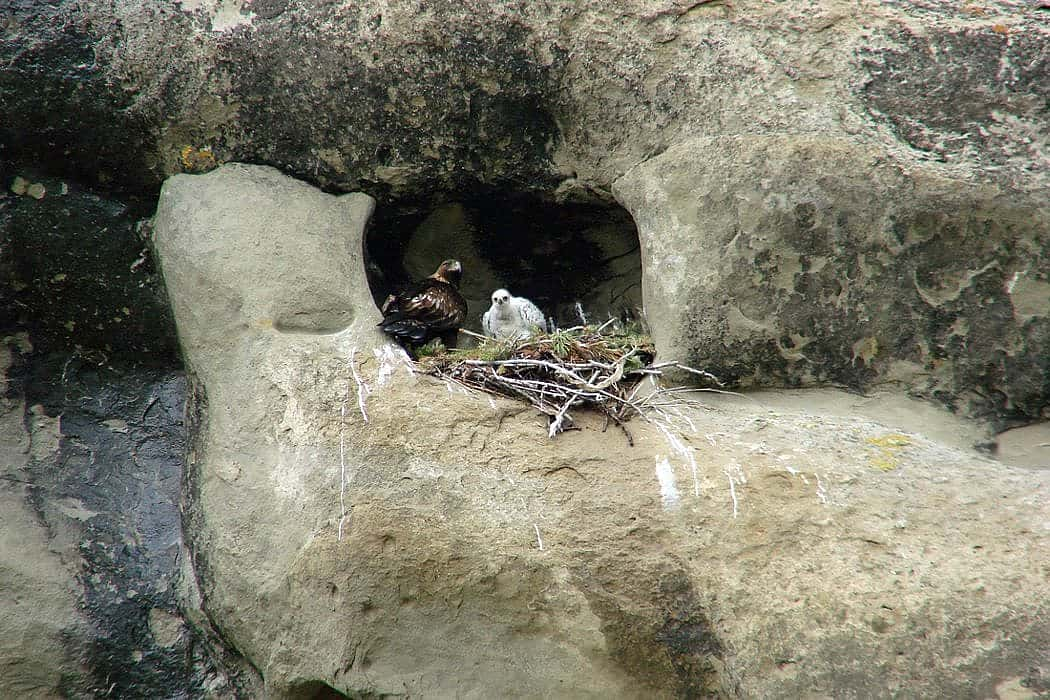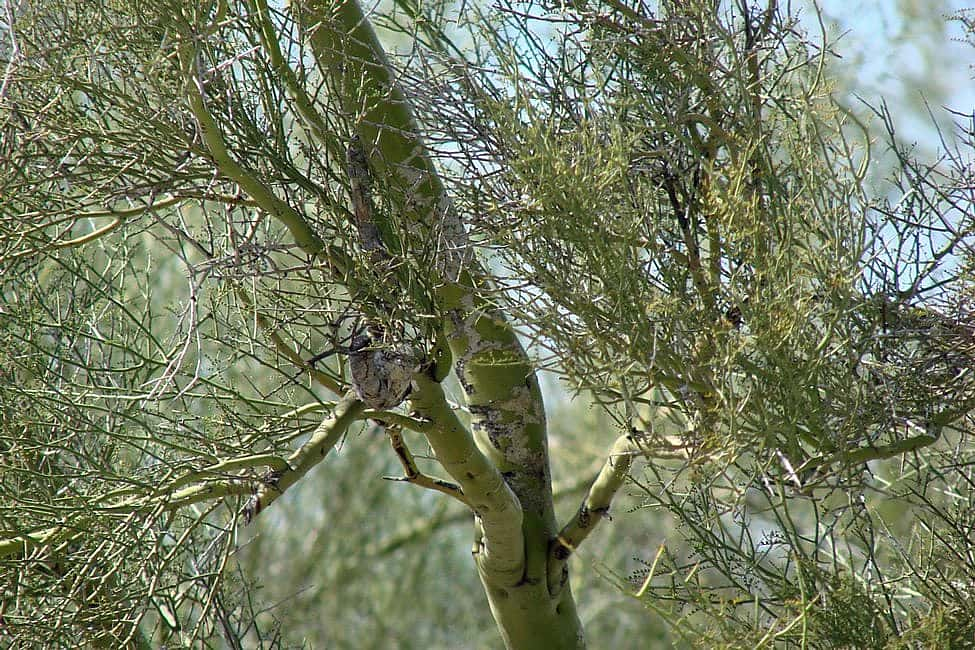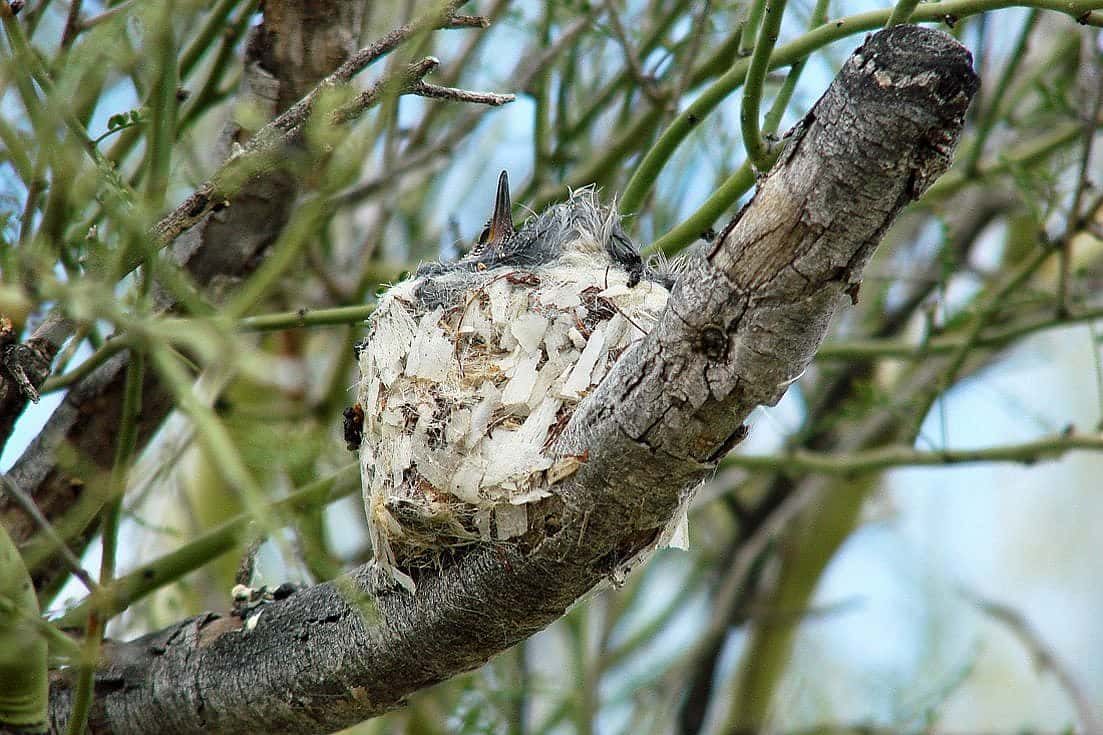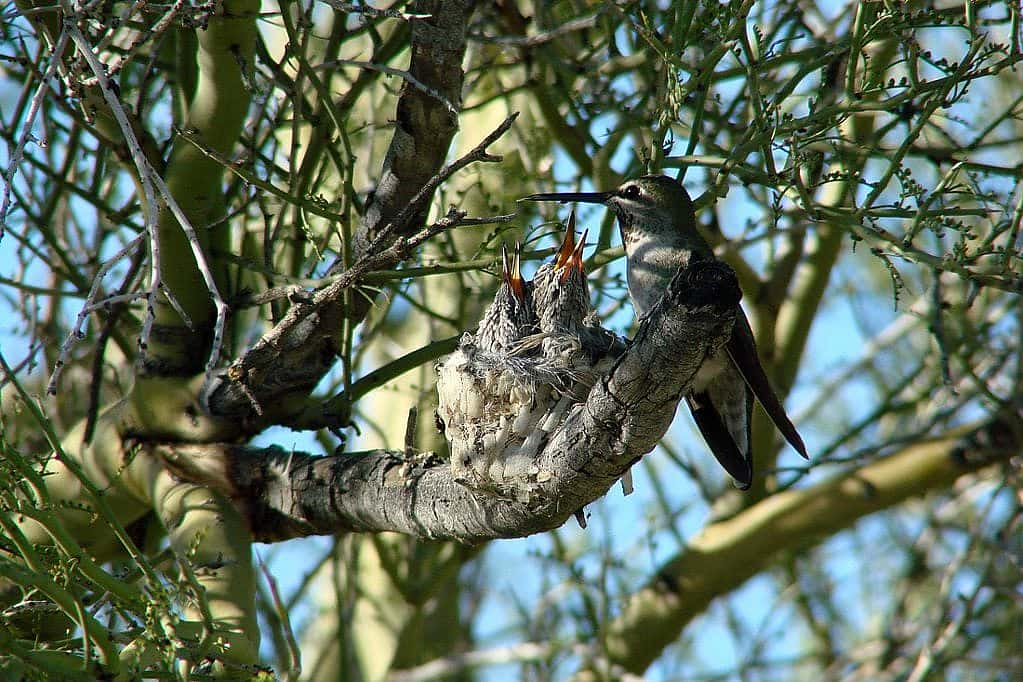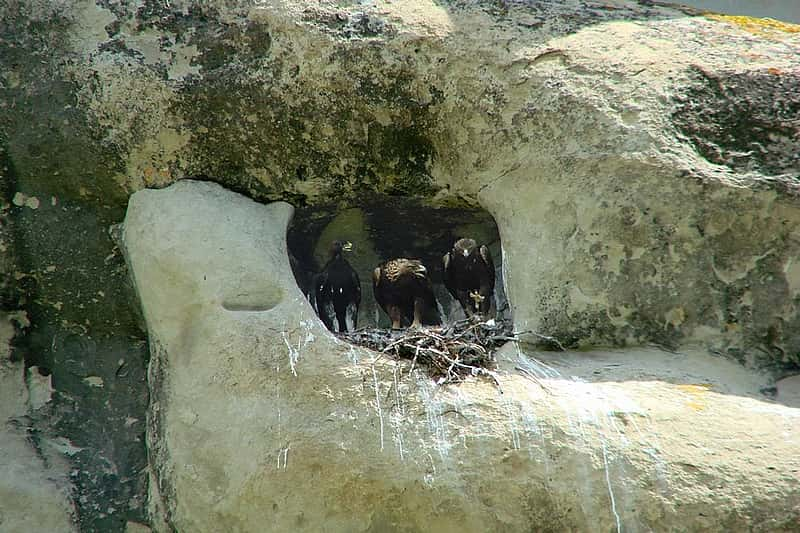
Hummingbird Nesting and Deadbeat Dads, or Are They?
When I think of the birds in our Draper Museum Raptor Experience education program and the golden eagles in our Draper Natural History Museum’s Bighorn Basin Golden Eagle Ecology research project, I think of how difficult it is to be a raptor and how hard the parents work. All of the raptors that I am familiar with work together as a team to raise their young. Generally the mother does most of the incubating and taking care of the young chicks while the father hunts, bringing food to the female and the chicks. In some cases the male may spell the female for short periods so she can do a little hunting. As the chicks become old enough to be left alone, both parents will hunt.
Some dads, however, just don’t make the cut. While spending two weeks in Lost Dutchman State Park in Arizona, I was quite surprised to find an Anna’s Hummingbird nest in a tree next to the parking area of our campsite.
After watching the nest for a couple of days, I realized I had not seen any males around. Was she raising these chicks on her own? Well, yes, it turns out that some males just aren’t very helpful. Depending on the source you read, 81 – 90% of bird species form a parental pair for at least one breeding season and many for life. The Anna’s Hummingbird is not one of these. Instead it falls to the female to do the work of building the nest, incubating the eggs, raising the young, and continuing to feed them for up to a week after fledging.
The male’s job is to impress the female, so that she will mate with him. The male performs courtship dives, climbing up to 130 feet into the air and then swooping to the ground with a burst of noise that is produced through their tail feathers. The female sits nearby and watches the display. If he is to her liking, she leads him toward her nest site, where she perches and watches as he performs another display where he flies back and forth about a foot above the female, often singing to her. The mating only takes a few seconds, then they go their separate ways. A polygamous bird, a pair bond is not developed, and both probably mate with a number of other birds.
The female now shoulders all the work. She builds her nest of plant material and small feathers, often binding it all together with spider web. They may also decorate the outside to help camouflaged the nest. “Our” nest was decorated with chips of tree bark.
I wondered what she was feeding them. I never saw her fly from our sugar water feeder directly to the nest. With a little research, I discovered that the female feeds her young chicks tiny insects, sometimes mixed with nectar. She does this by sticking her bill deep into the chick’s mouth, and regurgitating what she has gathered.
When our 2-weeks in Lost Dutchman were over, the chicks had not yet fledged. This is the last family photo I took.
Contrast the hummingbird family photo with my golden eagle family photo.
This got me to wondering if this behavior was true of all humming birds. Well it turns out it is! Just as I was beginning to feel sorry for the poor female hummingbird, I read an interesting fact. Female hummingbirds do not let the males near a nest. The theory is that the male hummingbird’s bright colors might alert a predator to the location of the nest. So I guess, if you’re not wanted, there is no point in hanging around.
Written By
Anne Hay
Anne Hay has a Bachelor's degree in Elementary Education and a Master's in Computers in Education. She spent most of her working years teaching third grade at Livingston School in Cody, Wyoming. After retiring she began doing a variety of volunteer work for the Buffalo Bill Center of the West’s Draper Natural History Museum. Anne loves nature and has a concern for the environment. She believes that educating the public, so that they will have a better understanding and appreciation for the natural world, is very important. Because of this belief, volunteering at the Center is a perfect fit. She spends time in the Draper Lab, observing eagle nests for Dr. Charles Preston’s long-term research project on nesting golden eagles, writing observation reports of raptor sightings in the Bighorn Basin, and working with the Draper Museum Raptor Experience. Anne states that, “Having a bird on my glove, is one of my all time favorite things in life.”
